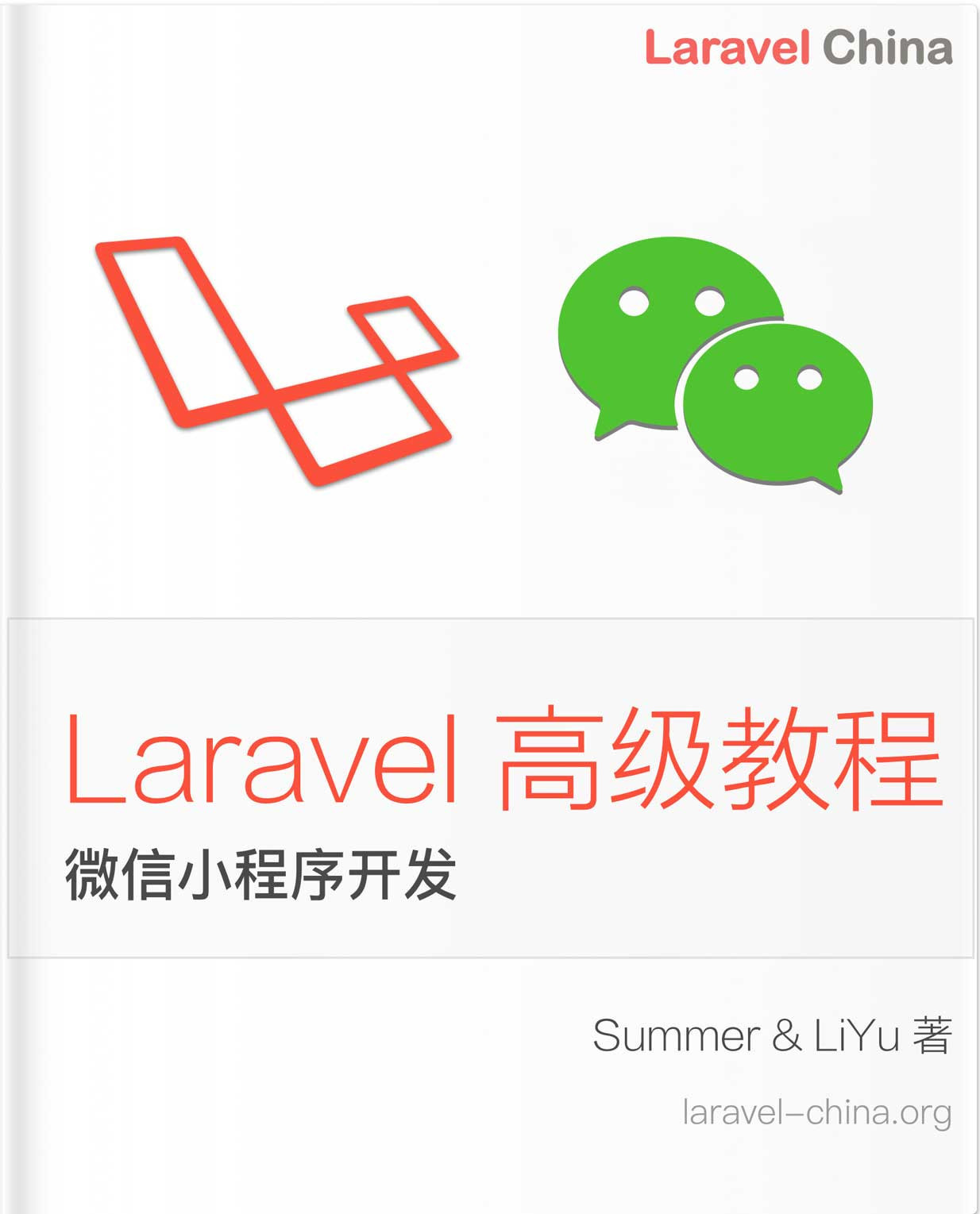入门套件
入门套件
介绍
让你在构建 Laravel 应用时领先一步,我们很乐意提供 应用入门套件。这些应用套件让你构建你下一个 Laravel 应用提供了一个良好的开端,并包括注册和验证应用程序用户所需的路由、控制器和视图。
虽然欢迎你使用这些套件。只需要安装新的 Laravel 副本,你就可以自由的从头开始构建你的应用。不管怎么样,我们知道你会创造出伟大的东西!
使用入门套件创建一个应用
使用其中一个入门套件创建一个新的 Laravel 应用,你首先应该 安装 PHP 和 Laravel CLI 工具。如果你已经安装 PHP 和 Composer , 你可以通过 Composer 安装 Laravel CLI 安装器工具:
composer global require laravel/installer然后,使用 Laravel CLI 安装器创建一个新的 Laravel 应用。这个 Laravel 安装器将会提示你选择你喜欢的入门套件:
laravel new my-app在你创建 Laravel 应用后,你仅仅需要通过 NPM 安装它的前端依赖,并启动 Laravel 开发服务:
cd my-app
npm install && npm run build
composer run dev一旦你启动了 Laravel 开发服务,你的应用将可以在你的浏览器中访问 localhost:8000 。
可用的入门套件
React
我们的 React 入门套件使用 Inertia 构建具有 React 前端的 Laravel 应用程序提供一个健壮且现代化的起点。
Inertia 允许你使用经典后端路由和控制器构建现代的单页面 React 应用。这让你享受到 React 前端功能,结合 Laravel 令人难以置信的后端生产力和闪电般快速的 Vite 编译。
这个 React 入门套件使用 React 19、TypeScript、Tailwind 和 shadcn/ui 组件库。
Vue
我们的 Vue 入门套件使用 Inertia 构建具有 Vue 前端的 Laravel 应用程序提供了一个很好的起点。
Inertia 允许你使用经典后端路由和控制器构建现代的单页面 Vue 应用。这让你享受到 Vue 前端功能,结合 Laravel 令人难以置信的后端生产力和闪电般快速的 Vite 编译。
这个 Vue 入门套件使用 Vue 组合 API、TypeScript、Tailwind 和 shadcn-vue 组件库。
Livewire
我们的 Livewire 入门套件使用 Laravel Livewire 前端构建 Laravel 应用提供了一个完美的起点。
Livewire 是一个仅仅使用 PHP 就可以构建动态、交互、前端 UI 的强大方法。它非常适合使用 Blade 模板的团队,他们正在寻找一种比 React 和 Vue 等 JavaScript 驱动的 SPA 框架更简单的替代方案。
Livewire 启动套件使用了 Livewire、Tailwind 以及 Flux UI 组件库。
启动套件自定义
React 配置
我们的 React 启动套件基于 Inertia 2、React 19、Tailwind 4 和 shadcn/ui 构建。与所有启动套件一样,所有后端和前端代码都存在于您的应用程序中,以便完全自定义。
大部分前端代码位于 resources/js 目录中。您可以自由修改任何代码来自定义应用程序的外观和行为:
resources/js/
├── components/ # Reusable React components
├── hooks/ # React hooks
├── layouts/ # Application layouts
├── lib/ # Utility functions and configuration
├── pages/ # Page components
└── types/ # TypeScript definitions要发布额外的 shadcn 组件,首先找到您想要发布的组件。然后使用npx发布该组件:
npx shadcn@latest add switch在这个例子中,该命令会将 Switch 组件发布到 resources/js/components/ui/switch.tsx。组件发布后,您可以在任何页面中使用它:
import { Switch } from "@/components/ui/switch"
const MyPage = () => {
return (
<div>
<Switch />
</div>
);
};
export default MyPage;可用布局
React 启动套件包含两种主要布局供您选择:"侧边栏"布局和"顶部导航栏"布局。侧边栏布局是默认选项,但您可以通过修改应用程序resources/js/layouts/app-layout.tsx 文件顶部导入的布局来切换到顶部导航栏布局:
import AppLayoutTemplate from '@/layouts/app/app-sidebar-layout'; // [tl! remove]
import AppLayoutTemplate from '@/layouts/app/app-header-layout'; // [tl! add]侧边栏变体
侧边栏布局包括三种不同的变体:默认侧边栏变体、“嵌入”变体和“浮动”变体。您可以通过修改 resources/js/components/app-sidebar.tsx 组件来选择您最喜欢的变体:
<Sidebar collapsible="icon" variant="sidebar"> [tl! remove]
<Sidebar collapsible="icon" variant="inset"> [tl! add]认证页面布局变体
React 启动套件中包含的认证页面,比如登录页面和注册页面,也提供三种不同的布局变体:“简单”、“卡片”和“分割”。
要更改您的身份验证布局,请修改在应用程序的 resources/js/layouts/auth-layout.tsx 文件顶部导入的布局:
import AuthLayoutTemplate from '@/layouts/auth/auth-simple-layout'; // [tl! remove]
import AuthLayoutTemplate from '@/layouts/auth/auth-split-layout'; // [tl! add]Vue
我们的 Vue 启动套件是用 Inertia 2、Vue 3 Composition API、Tailwind 和 shadcn-vue构建的。与我们所有的启动套件一样,所有的后端和前端代码都存在于您的应用程序中,以允许完全定制。
大部分前端代码位于 resources/js 目录中。您可以自由修改任何代码来自定义应用程序的外观和行为:
resources/js/
├── components/ # Reusable Vue components
├── composables/ # Vue composables / hooks
├── layouts/ # Application layouts
├── lib/ # Utility functions and configuration
├── pages/ # Page components
└── types/ # TypeScript definitions要发布额外的 shadcn-vue 组件,首先 找到您要发布的组件 。然后,使用 npx 发布组件:
npx shadcn-vue@latest add switch在此示例中,该命令将 Switch 组件发布到 resources/js/components/ui/Switch.vue 。一旦组件发布,您可以在任何页面中使用它:
<script setup lang="ts">
import { Switch } from '@/Components/ui/switch'
</script>
<template>
<div>
<Switch />
</div>
</template>可用布局
Vue 启动套件包括两种不同的主要布局供您选择:一个“侧边栏”布局和一个“头部”布局。侧边栏布局是默认的,但您可以通过修改应用程序的 resources/js/layouts/AppLayout.vue 文件顶部导入的布局来切换到头部布局:
import AppLayout from '@/layouts/app/AppSidebarLayout.vue'; // [tl! remove]
import AppLayout from '@/layouts/app/AppHeaderLayout.vue'; // [tl! add]侧边栏变体
侧边栏布局包括三种不同的变体:默认侧边栏变体、“嵌入”变体和“浮动”变体。您可以通过修改 resources/js/components/AppSidebar.vue 组件来选择您最喜欢的变体:
<Sidebar collapsible="icon" variant="sidebar"> [tl! remove]
<Sidebar collapsible="icon" variant="inset"> [tl! add]认证页面布局变体
Vue 启动套件中包含的认证页面,如登录页面和注册页面,也提供三种不同的布局变体:“简单”、“卡片”和“分割”。
要更改您的认证布局,请修改应用程序的 resources/js/layouts/AuthLayout.vue 文件顶部导入的布局:
import AuthLayout from '@/layouts/auth/AuthSimpleLayout.vue'; // [tl! remove]
import AuthLayout from '@/layouts/auth/AuthSplitLayout.vue'; // [tl! add]Livewire
我们的 Livewire 入门套件基于 Livewire 3、Tailwind 和Flux UI构建。与我们所有的入门套件一样,所有的后端和前端代码都存在于您的应用程序中,以实现完全定制。
Livewire 和 Volt
大部分前端代码位于 resources/views 目录中。您可以自由修改任何代码,以自定义应用程序的外观和行为:
resources/views
├── components # 可复用的 Livewire 组件
├── flux # 定制化的 Flux 组件
├── livewire # Livewire 页面
├── partials # 可复用的 Blade 局部视图
├── dashboard.blade.php # 已认证用户仪表盘页面
├── welcome.blade.php # 访客欢迎页面传统 Livewire 组件
前端代码位于 resources/views 目录中,而 app/Livewire 目录则包含对应 Livewire 组件的后端逻辑。
可用布局
Livewire 入门套件包含两种不同的主布局供您选择:「侧边栏」(sidebar) 布局和“顶部导航栏”(header) 布局。侧边栏布局是默认选项,但您可以通过修改应用程序 resources/views/components/layouts/app.blade.php 文件所使用的布局来切换到顶部导航栏布局。此外,您还应该在主 Flux 组件添加 container 属性:
<x-layouts.app.header>
<flux:main container>
{{ $slot }}
</flux:main>
</x-layouts.app.header>认证页面布局变体
Livewire 入门套件中包含的认证页面,例如登录页面和注册页面,也提供了三种不同的布局变体:「简洁」(simple)、「卡片」(card) 和「分割」(split)。
要更改您的认证布局,请修改应用程序中 resources/views/components/layouts/auth.blade.php 文件所使用的布局:
<x-layouts.auth.split>
{{ $slot }}
</x-layouts.auth.split>WorkOS AuthKit 认证
默认情况下,React、Vue 和 Livewire 入门套件都使用 Laravel 内置的认证系统来提供登录、注册、密码重置、邮箱验证等功能。此外,我们还提供了由 WorkOS AuthKit 驱动的每个入门套件的变体,该变体提供:
- 社交认证(Google、Microsoft、GitHub 和 Apple)
- 密钥(Passkey)认证
- 基于邮箱的「魔法认证」(Magic Auth)
- 单点登录(SSO)
使用 WorkOS 作为您的认证提供商需要 一个WorkOS 账户。WorkOS 为每月活跃用户不超过 100 万的应用程序提供免费认证服务。
要使用 WorkOS AuthKit 作为您应用程序的认证提供商,请在通过 laravel new 创建新的入门套件应用程序时选择 WorkOS 选项。
配置您的 WorkOS 入门套件
使用 WorkOS 驱动的入门套件创建新应用程序后,您应在应用程序的 .env 文件中设置 WORKOS_CLIENT_ID、WORKOS_API_KEY 和 WORKOS_REDIRECT_URL 环境变量。这些变量应与 WorkOS 仪表盘中为您应用程序提供的值匹配:
WORKOS_CLIENT_ID=your-client-id
WORKOS_API_KEY=your-api-key
WORKOS_REDIRECT_URL="${APP_URL}/authenticate"此外,您应在 WorkOS 仪表盘中配置应用程序主页 URL。该 URL 是用户登出您的应用程序后将被重定向至的地址。
配置 AuthKit 认证方法
当使用 WorkOS 驱动的入门套件时,我们建议您在应用程序的 WorkOS AuthKit 配置设置中禁用「邮箱+密码」(Email + Password)认证,仅允许用户通过社交认证提供商、通行密钥(Passkey)、「魔法认证」(Magic Auth)和单点登录(SSO)进行认证。这样您的应用程序可以完全避免处理用户密码。
配置 AuthKit 会话超时
此外,我们建议您将 WorkOS AuthKit 的会话空闲超时配置为与 Laravel 应用程序配置的会话超时阈值相匹配,通常为两小时。
Inertia SSR
React 和 Vue 入门套件兼容 Inertia 的服务器端渲染功能。要为应用程序构建兼容 Inertia SSR 的打包文件,请运行 build:ssr 命令:
npm run build:ssr为方便起见,还提供了 composer dev:ssr 命令。该命令会在为应用程序构建 SSR 兼容包后,启动 Laravel 开发服务器和 Inertia SSR 服务器,使您能够使用 Inertia 的服务器端渲染引擎在本地测试应用程序:
composer dev:ssr社区维护的入门套件
使用 Laravel 安装程序创建新应用程序时,您可以通过 --using 标志指定 Packagist 上可用的任何社区维护的入门套件:
laravel new my-app --using=example/starter-kit创建入门套件
为确保您的入门套件可供他人使用,您需要将其发布到 Packagist。您的入门套件应在 .env.example 文件中定义所需的环境变量,任何必要的安装后命令应列在入门套件 composer.json 文件的 post-create-project-cmd 数组中。
常见问题解答
如何升级?
每个入门套件都为您的下一个应用程序提供了坚实的基础起点。由于您完全拥有代码所有权,可以按照您的设想精确调整、定制和构建应用程序。但入门套件本身无需更新。
如何启用邮箱验证?
通过取消注释 App/Models/User.php 模型中的 MustVerifyEmail 导入,并确保模型实现 MustVerifyEmail 接口来添加邮箱验证功能:
<?php
namespace App\Models;
use Illuminate\Contracts\Auth\MustVerifyEmail;
// ...
class User extends Authenticatable implements MustVerifyEmail
{
// ...
}用户注册后将收到验证邮件。要限制对特定路由的访问直到用户完成邮箱验证,请为路由添加 verified 中间件:
Route::middleware(['auth', 'verified'])->group(function () {
Route::get('dashboard', function () {
return Inertia::render('dashboard');
})->name('dashboard');
});[!NOTE]
使用入门套件的 WorkOS 变体时不需要邮箱验证。
如何修改默认邮件模板?
您可能需要自定义默认邮件模板以更好地匹配应用程序品牌。要修改此模板,请通过以下命令将邮件视图发布到您的应用程序:
php artisan vendor:publish --tag=laravel-mail此操作将在 resources/views/vendor/mail 目录生成若干文件。您可以修改这些文件以及 resources/views/vendor/mail/themes/default.css 文件,从而改变默认邮件模板的外观样式。
本译文仅用于学习和交流目的,转载请务必注明文章译者、出处、和本文链接
我们的翻译工作遵照 CC 协议,如果我们的工作有侵犯到您的权益,请及时联系我们。

 Laravel 12 中文文档
Laravel 12 中文文档



 关于 LearnKu
关于 LearnKu




推荐文章: